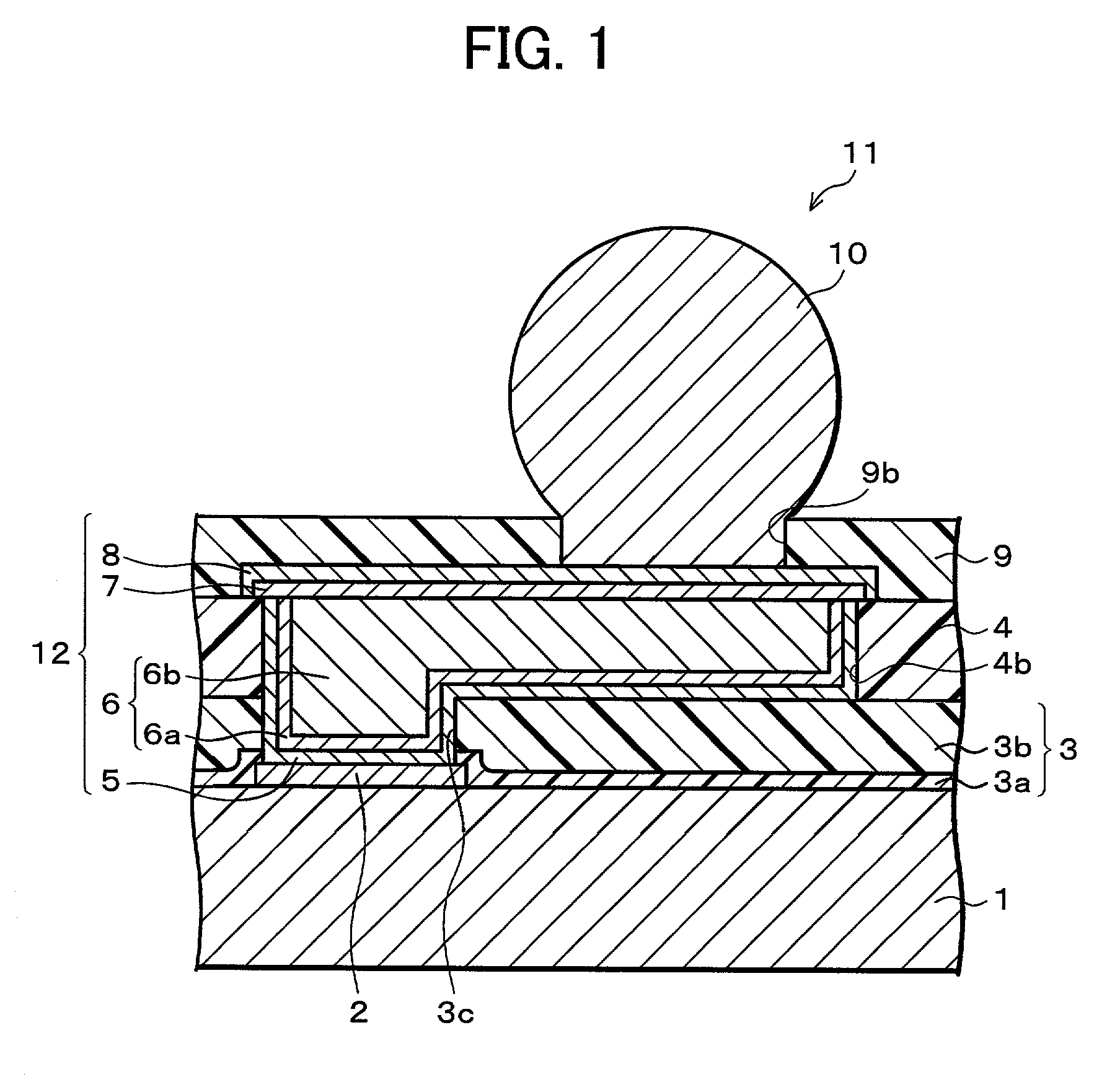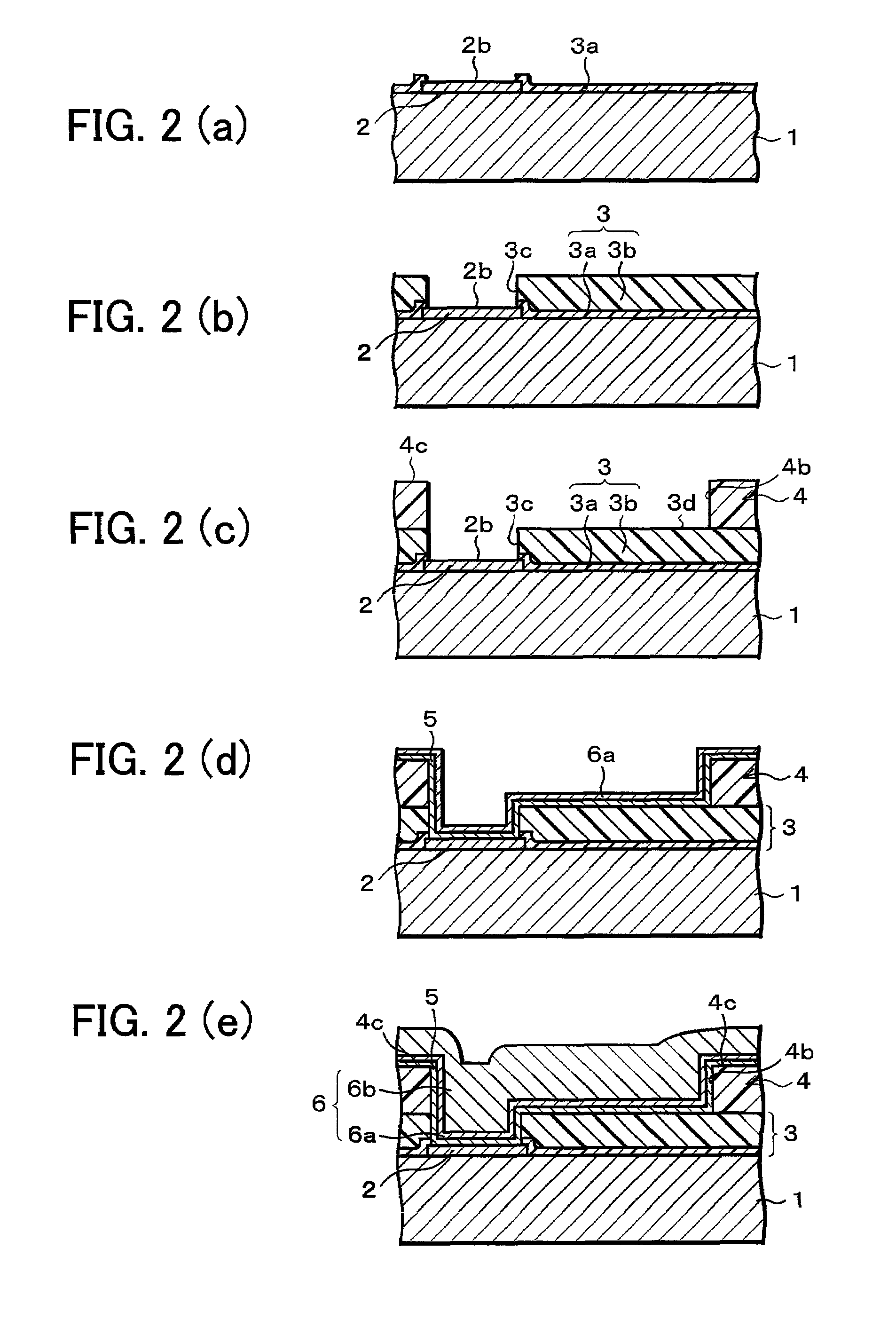Semiconductor device having a leading wiring layer
- Summary
- Abstract
- Description
- Claims
- Application Information
AI Technical Summary
Benefits of technology
Problems solved by technology
Method used
Image
Examples
Embodiment Construction
[0043]An embodiment of the present invention is explained as follows, referring to FIGS. 1 through 6.
[0044]FIG. 1 shows a cross sectional structure of a main part in a semiconductor device 11 in accordance with the embodiment of the present invention.
[0045]As shown in FIG. 1, the semiconductor device 11 is provided with a semiconductor substrate 1, a plurality of electrode pads 2, a first insulation layer 3, a second insulation layer 4, a leading wiring layer 12, a third insulation layer 9, and a plurality of external connecting terminals 10.
[0046]The plurality of electrode pads 2 and the first insulation layer 3 having a first opening section 3c in an area of the electrode pads 2 are formed on the semiconductor substrate 1. The first insulation layer 3 is composed of an inorganic insulation layer 3a and an organic insulation layer 3b formed on the inorganic insulation layer 3a.
[0047]The leading wiring layer 12 is formed on the electrode pad 2 and the first insulation layer 3. The ...
PUM
 Login to View More
Login to View More Abstract
Description
Claims
Application Information
 Login to View More
Login to View More - R&D
- Intellectual Property
- Life Sciences
- Materials
- Tech Scout
- Unparalleled Data Quality
- Higher Quality Content
- 60% Fewer Hallucinations
Browse by: Latest US Patents, China's latest patents, Technical Efficacy Thesaurus, Application Domain, Technology Topic, Popular Technical Reports.
© 2025 PatSnap. All rights reserved.Legal|Privacy policy|Modern Slavery Act Transparency Statement|Sitemap|About US| Contact US: help@patsnap.com



